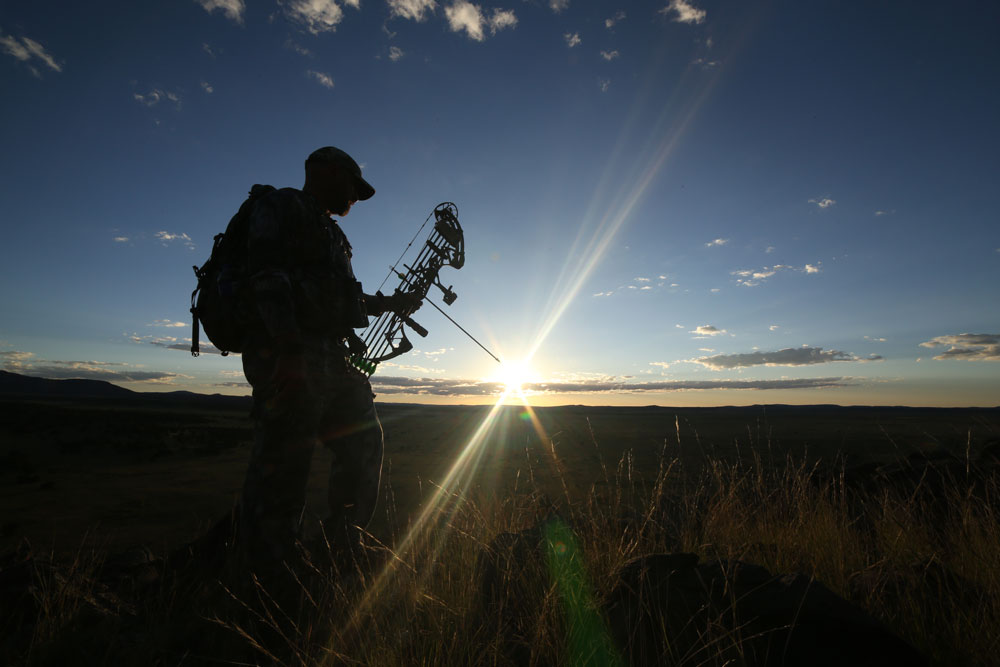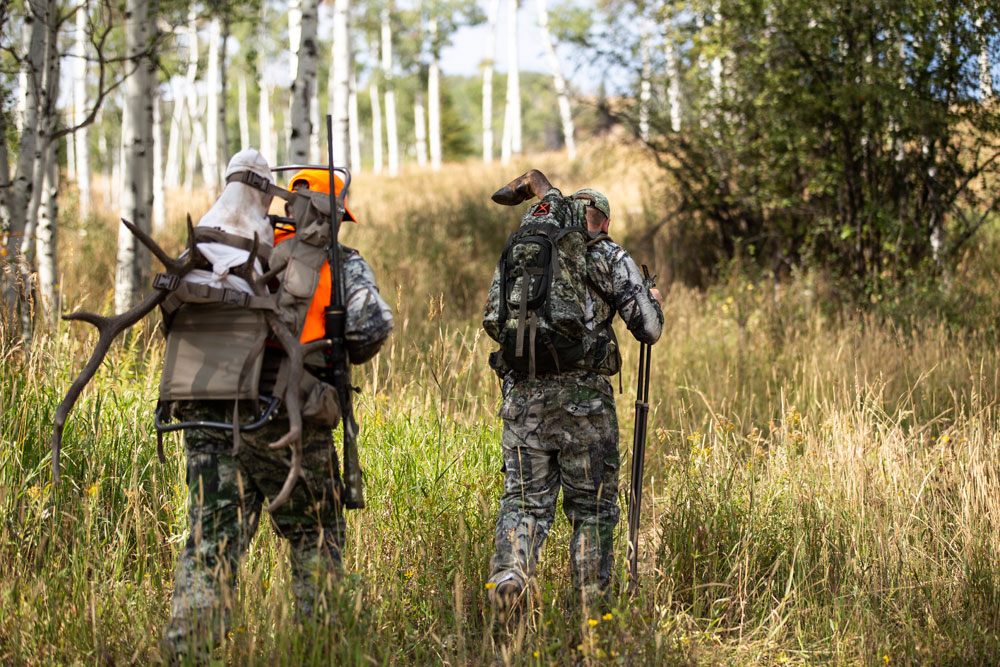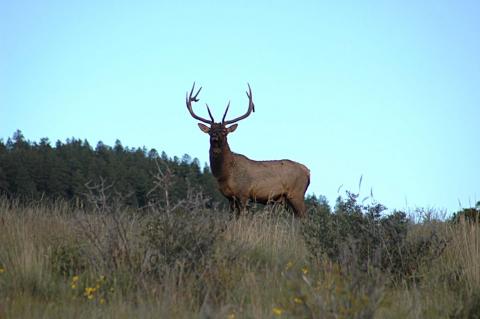Elk hunting can be a thrilling and frustrating pastime. Rates of overall hit success are low for these animals, but finding yourself facing down a 380-pound-plus bull elk in his prime is an exhilarating experience. When it comes to hunting elk, the work and patience required are worth the payoff.
There are two primary weapons you can use for elk hunting: the compound bow and the classic, hunter rifle. Many specialized bowhunters also carry a rifle when hunting deer or elk to take a long-distance shot if the opportunity presents itself.
Not everyone has the ability or desire to keep both a bow and rifle on hand during an elk hunt. To help with the decision-making process between the two hunting methods, we’ve compiled a list of the differences between the two, regarding cost, the hunting experience, and the required time commitment.
Bowhunting
A favorite among expert elk hunters looking for a challenge, bowhunting offers some flexibility with practice and with booking hunting trips, and it requires some serious stalking skills.
Higher skill-level necessary for success
Bowhunting requires a far higher level of personal skill and training than rifle hunting. There are several reasons for this.
There’s no external support that can help you steady your arm or hands when firing a bow, meaning you have to keep your upper body steady as you aim and release the shot.
It’s far more difficult to shoot a bow than a rifle while lying or sitting. You’re forced to stand upright and shoot from that position. A standing shot with no external support from the bow’s frame can be extremely difficult to execute effectively, and standing makes it harder to stay out of sight to avoid tipping off your prey.
You can’t afford to be inaccurate when firing a bow. With a rifle, the impact of a mis-hit bullet can often down an elk, but you don’t have that luxury with the less powerful projection of an arrow.
You’ll need to get relatively close to the elk to hit it successfully. Bows have a range of around 40 yards, so you’ll either need to stalk the elk within that distance or coax the elk toward you. You can call an elk in by imitating particular bugle calls—a method that requires a lot of skill and time to learn properly.
Whatever you decide, when it comes to DIY vs. guided hunting, bowhunting can be an exciting test of high personal skill and elk knowledge. If you feel like you have the time and patience to commit to developing expertise in this method, it can be an incredibly fulfilling experience.
More accessibility to practice facilities
Although bowhunting requires more practice than rifle marksmanship, bow practice requires considerably less space. Due to the limited range of the compound bow, a backyard or private area around 50 yards long should be fine to use for practice.
Compare this to firearm practice, which normally requires a trip to the nearest shooting range or rifle club.

Long bowhunting seasons
Bowhunting season is quite a bit longer than its rifle-hunting counterpart, mainly because it’s a more sustainable form of hunting. Due to its high-skill requirement, you’re less likely to kill an elk with a bow than with a rifle, so bowhunting season can afford to be longer-lasting while retaining a healthy-sized elk population.
Although it can be advantageous to have an earlier start to the season, starting early means you’re hunting several months before the rutting season. Heading out during an inopportune season, i.e., not during rutting season, could make for a fruitless pursuit.
Rifle Hunting
The more common method of elk hunting, rifle hunting is popular for its several advantages over bowhunting.
Less physically demanding
Rifle hunting requires neither the physical exertion nor the same degree of hand-eye coordination and steadiness necessary for success with a bow. Firing a rifle from a lying or sitting position takes some pressure off your body, and you can use the ground to steady your shot.
Unsurprisingly, the range of a rifle is far greater than that of a bow—by a few hundred yards. This means, as elk-hunter Scott Hatch explains, you can easily “sit back, glass a whole mountain-range, then move in just a bit” when the time comes. The scope on a good-quality hunting rifle helps you scan wide breadths of land from far distances, giving you a better chance of spotting elk to shoot.
More affordable
Perhaps surprisingly, rifle hunting quite often costs less than bowhunting. Although high-quality bows and rifles cost similar amounts, the additional accessories needed for close-range bowhunting can drive up the price of that endeavor. These accessories include effective camo equipment, scent-blocking hunting gear, and outdoor structures like shooting platforms.

Requires less time to develop skills
Rifle hunting requires less skill than bowhunting. You can take shots from much farther away, reducing the need to silently track wild animals through forests. Additionally, rifles don’t require the same precision accuracy as bows, as a misdirected bullet may mortally maim the animal, and you can often take two shots in quick succession with a rifle.
This means you don’t need to spend nearly as much time or effort developing your ability to hunt elk with a rifle compared to a bow. Depending on your weekly routine and regular commitments, this could mean that rifle-hunting suits you better.
Greater chance of an ethical shot
No matter your method of hunting, you should always try to soundly judge and accurately execute your shot to kill the elk quickly and effectively, without inflicting too much pain upon it through multiple, poorly directed shots.
Even if you’re not an expert on how to hunt elk, if you use a rifle, you’re more likely to kill the animal ethically than if you use a bow. A botched bow hit will allow the animal to get away with a small, incisive wound that could slowly kill it, weeks after you’ve left the bush empty-handed. A misfired bullet wound often slows the animal enough so that you can catch up with it and kill it.
When it comes to tracking and hunting elk, the best method is subjective. You might come up with a preferred method based on your weekly time commitments, personal budget, and access to practice facilities.






























